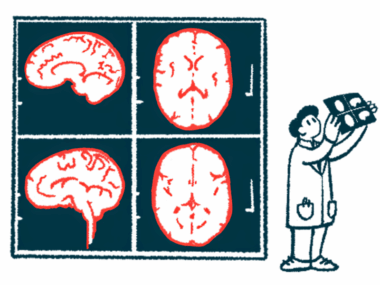In MS, spinal cord atrophy, chronic inflammation predict progression
Need for early recognition of 'silent progression' highlighted in new study
Written by |

In people with multiple sclerosis (MS), disability worsening independent of relapse activity — commonly known as “silent progression” — tends to be accompanied by greater atrophy, or shrinkage, in the spinal cord, as well as a higher number of lesions with chronic inflammation, known as paramagnetic rim lesions or PRLs.
That’s according to a new study on MS progression independent of relapse activity, or PIRA. Titled “Association of Spinal Cord Atrophy and Brain Paramagnetic Rim Lesions With Progression Independent of Relapse Activity in People With MS,” the study was published in the journal Neurology.
“These results open new perspectives not only for the identification of targeted treatments for patients with PIRA but also for a better stratification of patients who will develop PIRA in the future,” the researchers wrote.
Most people with MS experience relapses, or flares, in which symptoms suddenly worsen. Relapses followed by periods of remission where symptoms ease are the defining hallmark of relapsing-remitting MS (RRMS) — though these also can occur in people with progressive forms of MS, which are defined by symptoms gradually worsening over time.
Sometimes, relapses can cause symptoms that linger over the long term, which is referred to as relapse-associated worsening. But it’s becoming increasingly recognized that many people with MS also experience PIRA, a so-called silent progression of the neurodegenerative disease. In fact, a review published last year found PIRA to be the main driver of disability in MS — even in people with RRMS, whose disability progression was previously thought to arise mainly from relapses.
Significantly greater spinal cord atrophy seen in patients with silent progression
While relapses are thought to occur due to acute inflammation in the brain and/or spinal cord, the biological mechanisms that drive PIRA are not well understood. Some studies have suggested that patients who experience PIRA tend to have more atrophy in their brains, indicating more diffuse neurodegeneration.
Now, a team of more than 40 scientists aimed to assess whether atrophy in the spinal cord also might be indicative of PIRA. The researchers also assessed the relationship between PIRA and PRLs, a specific type of inflamed lesion that’s found almost exclusively in MS and has been linked with worse disability in newly diagnosed patients.
These lesions are a spot of chronic, inflammatory damage in the brain and are defined by a central core of pronounced demyelination, surrounded by a so-called rim of iron-laden immune cells. Demyelination is the loss of the protective sheath that surrounds nerve cells. In MS, lesions are believed to have smoldering inflammation that continues to contribute to neurodegeneration over time.
“Identifying mechanisms of neurodegeneration in PIRA will in fact enable not only the development of targeted treatments for patients with PIRA but also to better stratify them for the most appropriate therapeutic regimen,” the scientists wrote.
The study included data on 445 people with MS who had at least four years of follow-up data available. Over the course of this follow-up, 74 patients experienced PIRA and another 17 had relapse-associated worsening, while the rest of the patients didn’t have disability worsening.
Our data show that the accumulation of disability occurring in the context of PIRA [progression independent of relapse activity] is associated with accelerated [spinal] cord tissue loss.
The results showed that, in comparison with patients who didn’t have disability worsening, those that experienced PIRA had significantly greater rates of atrophy in the spinal cord. Patients who experienced progression independent of relapse activity also tended to have lower spinal cord volume at the start of the study, the researchers noted.
“Our data show that the accumulation of disability occurring in the context of PIRA is associated with accelerated [spinal] cord tissue loss,” the scientists wrote.
Spinal cord atrophy rates also were higher in patients with progressive MS than those with RRMS, the results showed. The researchers said these findings “corroborate the vast body of literature showing increased spinal cord atrophy in the progressive forms of MS.”
The number of PRLs also was significantly higher among patients who experienced PIRA compared with those without disability progression. Also, progressive MS patients tended to have more PRLs than people with RRMS.
“The evidence that PRLs are associated with the occurrence of PIRA can be promising for potential applicability in patient monitoring,” the scientists noted.
In analyses of only patients with RRMS, both spinal cord atrophy and PRL counts were also significantly higher in individuals who experienced progression independent of relapse activity.
Further statistical models showed that both spinal cord atrophy and PRLs, as well as atrophy in the brain, were independently associated with an increased risk of PIRA over the course of follow-up.
Combined with data from previous studies, these results “stress the need for early recognition of PIRA in clinical practice to prevent irreversible tissue loss,” the researchers concluded, adding that, “to this end, cross-sectional measures of brain and cervical spinal cord volume could be of value.”






